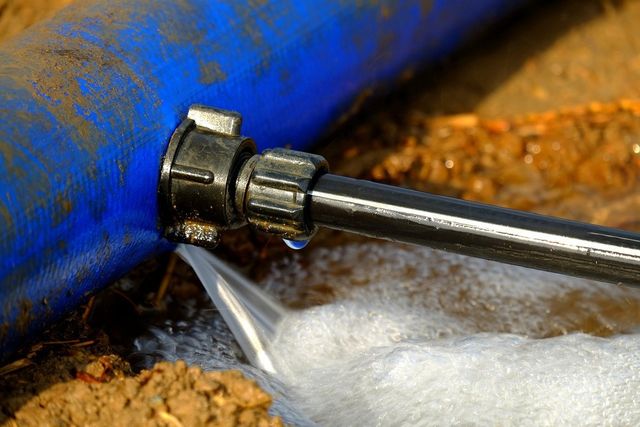6 Ways to Locate Concealed Water Leaks in Your Residence
6 Ways to Locate Concealed Water Leaks in Your Residence
Blog Article
We've stumbled on this post relating to Top leak detection hacks down the page on the internet and believe it made perfect sense to write about it with you on this page.

Early discovery of dripping water lines can mitigate a prospective calamity. In addition to saving you money, it will certainly minimize the stress as well as irritation. The minute you find a leak, calling your plumber for fixings is the very best service. Some tiny water leaks might not be visible. If you can not detect it with your nude eyes, here are some hacks that aid.
1. Check Out the Water Meter
Every home has a water meter. Checking it is a guaranteed way that assists you uncover leaks. For beginners, turn off all the water sources. Make certain no one will certainly flush, utilize the tap, shower, run the washing maker or dishwasher. From there, most likely to the meter and also watch if it will transform. Since nobody is using it, there need to be no movements. That suggests a fast-moving leakage if it moves. If you identify no adjustments, wait an hour or 2 as well as examine back again. This indicates you might have a slow-moving leakage that could also be underground.
2. Check Water Usage
Examine your water costs as well as track your water consumption. As the one paying it, you must observe if there are any kind of discrepancies. If you spot sudden changes, despite your usage being the same, it indicates that you have leakages in your plumbing system. Keep in mind, your water costs need to drop under the very same array each month. An unexpected spike in your expense suggests a fast-moving leakage.
At the same time, a constant rise on a monthly basis, even with the exact same practices, reveals you have a slow leakage that's also slowly intensifying. Call a plumber to extensively inspect your building, particularly if you feel a warm location on your flooring with piping underneath.
3. Do a Food Coloring Test
When it involves water intake, 30% comes from toilets. Test to see if they are running correctly. Decrease specks of food color in the storage tank and wait 10 minutes. If the shade in some way infiltrates your bowl during that time without flushing, there's a leakage between the storage tank as well as bowl.
4. Asses Outside Lines
Don't fail to remember to inspect your exterior water lines also. Must water leak out of the connection, you have a loose rubber gasket. One tiny leakage can throw away loads of water and also surge your water bill.
5. Check and Examine the Scenario
Home owners must make it a routine to inspect under the sink counters and also inside cabinets for any kind of bad odor or mold and mildew growth. These two warnings suggest a leak so punctual focus is needed. Doing routine inspections, also bi-annually, can conserve you from a major problem.
If you recognize your house is already old, maintain a watchful eye on your heating units, hoses, pipelines etc. Look for stainings as well as weakening as the majority of devices as well as pipelines have a life span. They will certainly additionally normally deteriorate due to tear as well as put on. If you suspect leaking water lines in your plumbing system, don't wait for it to escalate. Call a professional plumber right now so you don't end up with an awful mess in your home.
Early detection of leaking water lines can alleviate a possible calamity. Some little water leakages may not be visible. Checking it is a proven method that assists you discover leakages. One little leak can waste tons of water and also spike your water bill.
If you believe dripping water lines in your plumbing system, don't wait for it to rise.
WARNING SIGNS OF WATER LEAKAGE BEHIND THE WALL
PERSISTENT MUSTY ODORS
As water slowly drips from a leaky pipe inside the wall, flooring and sheetrock stay damp and develop an odor similar to wet cardboard. It generates a musty smell that can help you find hidden leaks.
MOLD IN UNUSUAL AREAS
Mold usually grows in wet areas like kitchens, baths and laundry rooms. If you spot the stuff on walls or baseboards in other rooms of the house, it’s a good indicator of undetected water leaks.
STAINS THAT GROW
When mold thrives around a leaky pipe, it sometimes takes hold on the inside surface of the affected wall. A growing stain on otherwise clean sheetrock is often your sign of a hidden plumbing problem.
PEELING OR BUBBLING WALLPAPER / PAINT
This clue is easy to miss in rooms that don’t get much use. When you see wallpaper separating along seams or paint bubbling or flaking off the wall, blame sheetrock that stays wet because of an undetected leak.
BUCKLED CEILINGS AND STAINED FLOORS
If ceilings or floors in bathrooms, kitchens or laundry areas develop structural problems, don’t rule out constant damp inside the walls. Wet sheetrock can affect adjacent framing, flooring and ceilings.
https://www.servicemasterbyzaba.com/blog/how-to-detect-water-leakage-in-walls/

I came across that piece of writing on Finding hidden leaks while exploring the internet. I beg you take the time to share this post if you enjoyed reading it. I am grateful for your time. Visit again soon.
Report this page